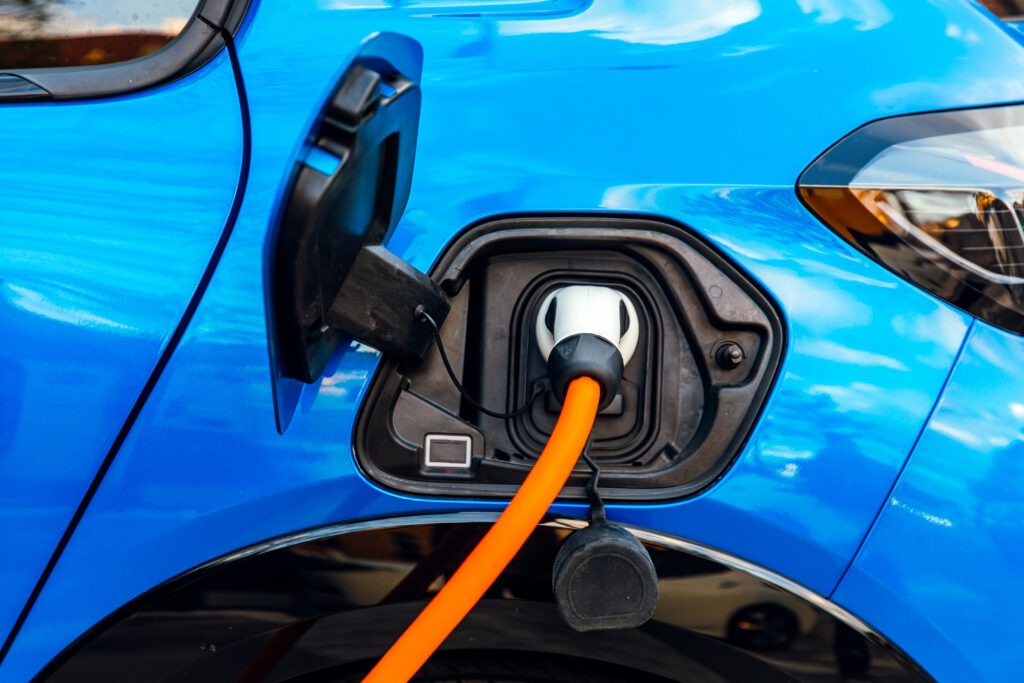Consumer demand for new vehicles remains strong in US
21 February 2025

Strong retail sales and high consumer expenditure point to a generally healthy market. However, the industry is not without its challenges. The latest forecast for J.D. Power sets out expectations for the market.
New-vehicle sales in the US, including retail and non-retail transactions, are projected to reach 1.24 million units in February. This equates to year-on-year growth of 3.5%. This February has 24 selling days, one fewer than the same month a year ago.
Comparing the same sales volume without adjusting for selling days equates to a decrease of 0.6% from 2024. The seasonally-adjusted annualised rate (SAAR) for new-vehicle sales is expected to reach 16.6 million units. This would be up 0.3 million units from February 2024.
Retail sales of new vehicles are expected to reach 1.01 million, an 8.1% increase from February 2024. Comparing the same sales volume without adjusting for selling days translates to an increase of 3.8% from 2024.
‘Consumer demand for new vehicles continues to exhibit strength,’ said Thomas King, president of the data and analytics division at J.D. Power. ‘February marks the fifth consecutive month of year-on-year retail sales growth, with an 8.1% increase on a selling-day adjusted basis.
The strong retail sales pace and resiliently high average transaction prices mean consumers will spend more money buying new vehicles this month than any other February on record.
Pressure on profitability
‘While strong retail sales and record consumer expenditure point to a generally healthy market, the industry is not without its challenges. Rising inventory levels on dealer lots and increased competition for new-vehicle buyers is pressuring both manufacturer and retailer profitability, as evidenced by rising discounts from manufacturers and falling profit margins for retailers,’ added King.
The decline in sales to fleet customers is also notable, with a fall of 12.5% expected compared to February 2024. Fleet sales will account for 18.8% of total light-vehicle sales, down 3.4 percentage points (pp) from a year ago.
The drop in fleet sales is especially notable in the context of rising retail sales. However, it is driven primarily by manufacturers limiting discounts for fleet buyers. Carmakers are instead choosing to focus on historically more profitable retail buyers. Nevertheless, the fleet market remains a significant opportunity to increase sales this year for manufacturers willing to offer compelling discounts.
Manufacturer discounts for consumers are continuing to increase. The average incentive spend per vehicle is expected to grow 22.8% from February 2024 and is on track to reach $3,227 (€3,082). Expressed as a percentage of the manufacturer’s suggested retail price (MSRP), incentive spending is currently at 6.5%, an increase of 1.1pp from a year ago.
Total retailer profit per unit, which includes vehicles gross plus finance and insurance income, is expected to be $2,171. This would be down 11.8% from February 2024. The decline in profits is primarily driven by rising inventory levels and increased competition for new-vehicle buyers.
Far fewer vehicles are selling above the MSRP. So far in February, only 11.9% of new vehicles have been sold above MSRP, down from 19.2% a year ago.
Prices remain high in US
‘Despite rising manufacturer discounts and falling retailer profits, average transaction prices remain high,’ explained King. ‘The average retail transaction price for new vehicles is trending toward $44,619, up $71, or 0.2% from February 2024.’
Sales growth and small price increases mean buyers are on track to spend nearly $42.6 billion on new vehicles. This is 2.5% higher than in February 2024, and the best February on record.
For retailers, the rise in sales is not enough to offset the decline in per-unit profits. Total aggregate retailer profit from new-vehicle sales for this month is projected to reach $2.1 billion. This would be down 10.1% from February 2024.
Vehicle affordability remains a challenge for the industry. It is the primary reason the sales pace while strengthening, has not returned to pre-pandemic levels.
Average monthly finance payments this month are on pace to be $738, up $17 from February 2024. This would make it the highest February on record. The average interest rate for new-vehicle loans is expected to be 6.8%. This would be down 3 basis points from a year ago (one basis point is equal to 0.01%).
Strong used-vehicle prices
So far in February, used-vehicle retail prices have exhibited strength. The average used-vehicle price is $28,263, increasing by $289 from a year ago. Despite relatively strong used prices, consumers have less equity on their trade-ins.
Average trade-in equity is expected to decline by $173 from a year ago, trending towards $7,625. Furthermore, the proportion of new-vehicle buyers who have negative equity on their trade-in is increasing. Currently, 25.5% of trade-ins have negative equity, up 2pp from February 2024.
These trade-in equity dynamics further exacerbate the industry’s affordability challenges. More consumers must now deal with the double challenge of high new-vehicle prices compounded by negative equity. This leads to even higher monthly loan payments.
Sales volumes in January and February are typically the lowest of the year and are frequently a weak indicator of overall market conditions. However, January and February results are consistent with trends observed in the latter part of 2024. They have been characterised by rising sales driven by increased discounts from both manufacturers and retailers.
This pattern is expected to continue into March and beyond. However, several factors could affect the market in the months ahead. This included changes to electric vehicle tax credits, fuel economy regulations and import tariffs.
‘There is considerable uncertainty over whether these changes will materialise and, if so, when they will take effect and how significant the changes will be. In the interim, consumer demand remains strong, as evidenced by total consumer spending on new vehicles in January and February reaching record levels,’ King said.
The details
- The average new-vehicle retail transaction price in February is expected to reach $44,619, up $71 from February 2024. The highest for any month, $47,329, was set in December 2022.
- Average incentive spending per unit in February is expected to reach $3,227, up $599 from February 2024. Spending as a percentage of the average MSRP is expected to increase to 6.5%, up 1.1pp from February 2024.
- Average incentive spending per unit on trucks and SUVs in February is expected to be $3,393, up $633 from a year ago. Meanwhile, the average spending on cars is expected to be $2,467, up $371 from a year ago.
- Retail buyers are on pace to spend $42.6 billion on new vehicles, up $1 billion from February 2024.
- Trucks and SUVs are on pace to account for 81.3% of new-vehicle retail sales in February.
- Fleet sales are expected to total 233,691 units in February, down 12.5% from February 2024.
- Fleet volume is expected to account for 18.8% of total light-vehicle sales, down 3.4pp from a year ago.
- Average interest rates for new-vehicle loans are expected to be 6.8%, down 3 basis points from a year ago.
Strong start for EVs
‘Electric vehicle (EV) sales started the year strong, reaching 9.8% monthly retail share in January, which is a 1.4pp increase from January 2024. The percentage of new-vehicle shoppers who are ‘very likely’ to consider an EV peaked at 29% in January, 3.5pp higher than a year ago,’ explained Elizabeth Krear, vice president of the electric vehicle practice at J.D. Power.
Shoppers who are ‘very unlikely’ to consider an EV reached a low of 18%, the lowest percentage in more than a year. The average transaction price of a battery-electric vehicle (BEV), was just $750 more than the average transaction price of a non-BEV in January. This includes the $7,500 federal tax incentive, where applicable.
‘These tailwinds, however, are expected to be offset by headwinds as federal tax incentives, infrastructure funding and regulations are expected to change. To what degree remains to be seen,’ commented Krear.
Based on these factors, J.D. Power projects the pace of EV retail share growth to level off in 2025, accounting for 9.1% of the overall market. Long term, the forecast calls for the EV market to reach 26% retail share by 2030. This is approximately half of the market share the previous Biden administration targeted.




